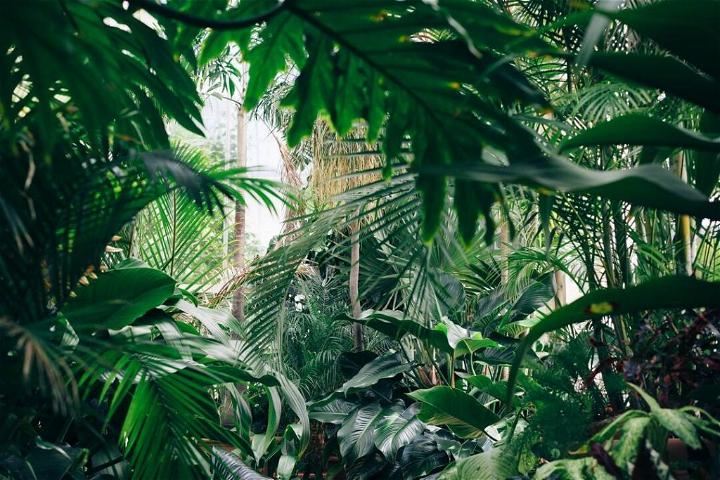You can enjoy the beauty of palm trees without ever having to visit the tropics. They will look great planted in your lawn or decorative containers around your home. When cared for properly, palm trees give off a peaceful tropical vibe all through the year. Here are a few tips for caring for your palm trees and keeping them looking beautiful.

1. Provide the Proper Soils and Light
Once you have picked palms that match your needs, it is time to think about soil and sunlight. Palms growing in the understory below taller trees thrive under low light conditions. Those with a higher light requirement will do well in sunny windows. If you have to grow them indoors, consider offering supplemental lights.
Landscape palms also have different light needs. While some do well in shady spots, others thrive in direct sunlight. However, too much sun can leave the leaves looking sunburned.
Palm trees are generally adaptable to different soils. The secret is to offer enough drainage. They have fairly shallow roots that need plenty of air. They are unlikely to do well in water-logged soil. With potted palms, your choice of pot is critical. The best ones drain fast but retain moisture. While looks are important, your pot must be heavy enough to match the size of your palm.
Landscape palms grow best in fairly acidic soils. Consider doing a soil test and making the relevant adjustments to optimize your soil.
2. Trimming
Even though you can trim your palm tree whenever you want, some seasons are more appropriate for trimming than others. Palm trees typically flourish in hot, humid areas. Trimming during warmer months will help your tree grow faster. Late spring is the best time to trim, and you should generally avoid trimming in the middle of summer. The specific month for palm tree trimming depends on the type of tree you have. Luckily, you don’t need a professional to handle the trimming work.
With a sharp pruning saw, you will be able to make clean cuts with minimal strain. Before you cut off any prunes, rub hydrogen peroxide or rubbing alcohol on your tools. This way, you can minimize the spread of diseases. Even though you’ll be old and dying fronds, don’t get very close to the tree trunk. If you do, it could create an entry point for bugs.
3. Winter Protection
If you take your indoor palms outside for summer, don’t forget to bring them back in during winter. It would help if you were careful in spring as well. Please wait until you get past the danger of frost before taking them back outside.
If you have landscape palms, consider checking with your local county extension agent for frost dates. They may give you tips to winterize your palms. If you don’t protect your palms during winter, they are unlikely to survive.
Watering
Although they are different, both indoor and outdoor palms have the same watering needs. By watering your palms correctly, you can keep them beautiful and healthy all-year-round. The soil needs to be consistently moist. However, it should never be too wet.
Overwatering is one of the most common mistakes that people make. It leaves your palm fronds looking yellowish or brown. Always check your soil before watering. If it is already moist, there is no need to water it. The best way to test it is at finger-length depth.
Container palms need extra attention. Since they aren’t exposed to the wind and sun, the water doesn’t dry out fast. If you aren’t careful, you may overwater your potted palms.
Fertilizer
Considering the unique nutrient needs of palms, you need to provide them with unique plant food. They are typically sensitive to excessive phosphorus levels. With low phosphorus levels, palms can absorb other important nutrients more efficiently. When choosing a fertilizer, ensure that it doesn’t have too much phosphorus, or your leaves will soon be turning yellow.
Be Careful With Epsom Salts
Epsom salts are great for your palm trees. However, you shouldn’t rely on them as a cure for everything. It could turn into an example of too much of a good thing. Many palm tree lovers know the importance of Epsom salt. Unfortunately, they use it as a cure for all problems. Epsom salts are rich in magnesium, and they can increase the PH of soil. If you use them too often, your soil may soon become harmful to your palm trees.
Look Out for Nutritional Deficiencies
If you notice that your palm tree isn’t looking its best, it probably has a few nutritional deficiencies. Most nutritional deficiencies stem from having a nutrient imbalance, soil erosion, or planting too deep. Palm trees will always let you know if they have nutritional deficiencies. Take a sample to your county extension service office, and they will give you a diagnosis. Here are a few signs of common nutritional deficiencies.
Potassium
You can treat potassium deficiency in your palm tree with sulfur-coated potassium sulfate. Orange-yellow spots on fronds characterize it. The older ones may have frizzling that is worse on tips. If you don’t address this deficiency on time, your palm tree may die.
Nitrogen
Nitrogen deficiency reduces the growth rate of your palm tree significantly. Its most apparent sign is uniform chlorosis, especially on the older leaves.
Manganese
If your tree has manganese deficiency, the new fronds will look a lot smaller than average. You may also notice frizzling at the base of your leaves. There may be uneven chlorosis. Treat this deficiency with Manganese (II) sulfate.
Iron

Iron deficiency causes general chlorosis in new fronds. The veins may be very sharply defined. If your soil is very alkaline, use chelated iron to treat it. Fe-DTPA (330 is more appropriate for acidic soils.
Nothing gives off the tropical vibe better than palm trees. With some effort, you can keep yours beautiful and healthy all through the year. You no longer need to visit the tropics to enjoy beautiful palms. Whether you choose to plant them in landscapes or pots, the care tips are pretty similar.
